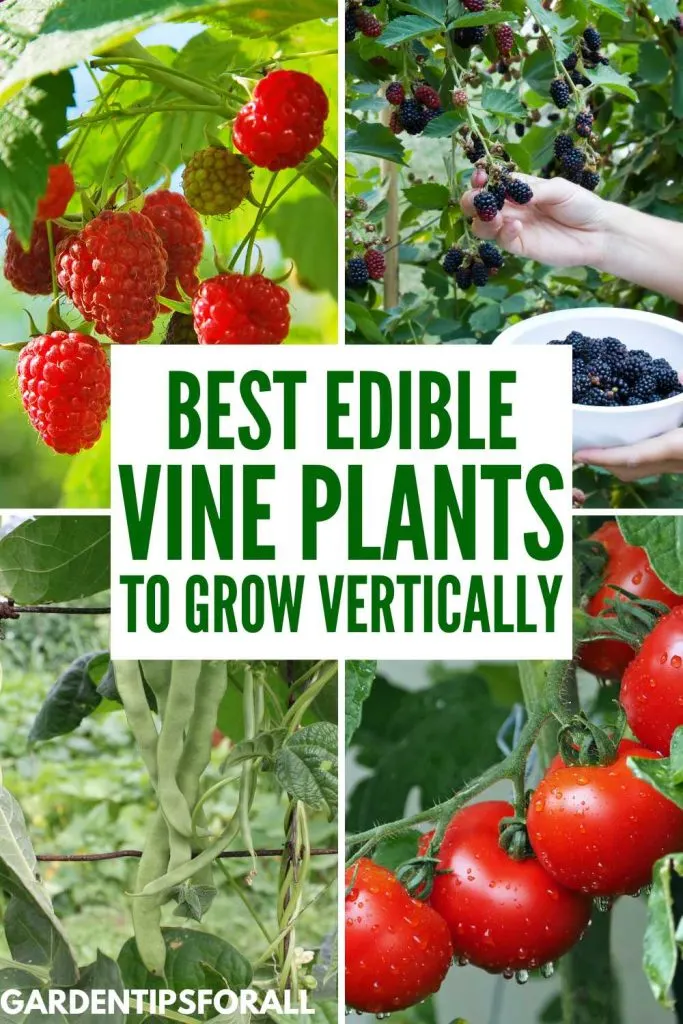Best Edible Vine Plants to Grow Vertically
Many fruits and vegetables grow on vines and if you as a home gardener want to grow some of these fruits and vegetables you either need to have a lot of garden space or else consider growing these plants vertically.
There are several reasons why you may want to consider growing edible climbing plants vertically:
- You can grow more food in less space since you don’t have vines stretching across the ground.
- When you have climbing vine plants you reduce the chances of your crop attracting some pests and contacting certain diseases.
- Vertically growing plants are easier to harvest and can save stress on your knees and back.
Here is a look at some of the best edible climbing plants you can grow in your own garden.
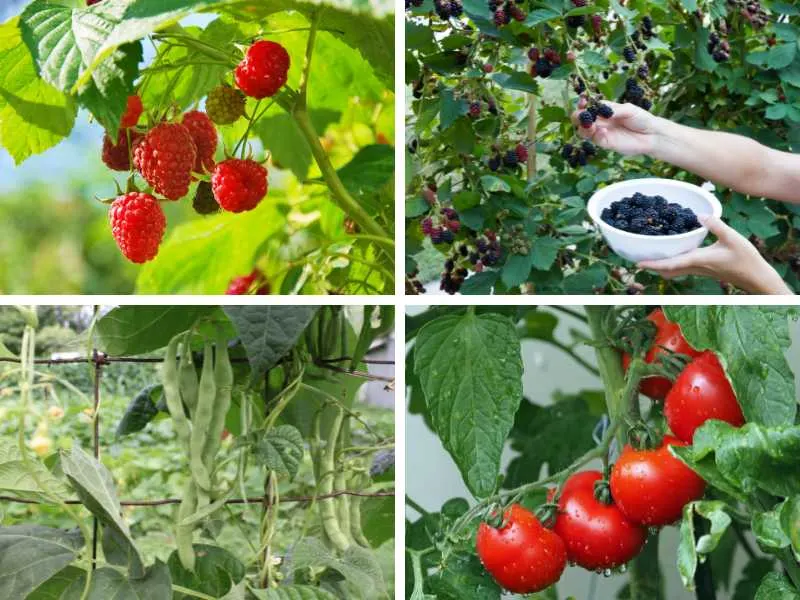
Related Article:
8 Best Edible Climbing Plants You Can Grow Vertically
#1. Grapes
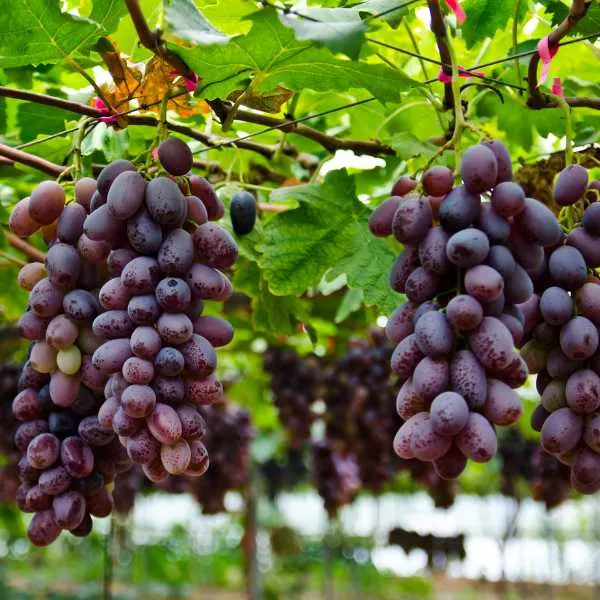
Grapes are a perennial fruit that grows on vines that easily climbs up the arbors or Pergola. Grape vines do require a bit of space even when climbing an arbor.
Do keep in mind that newly planted grapes won’t mature and bear fruit for 3 years, but the fruit is worth waiting for. Grape vines do need to be pruned regularly in order to bear healthy fruit.
Growing your own grapes allows you to eat grapes fresh off the vine or you can turn those grapes into jelly, juice or even try your hand at making your own wine.
#2. Raspberries

Raspberry vines are actually called canes. These vines can be trained to climb trellises. Raspberries can be red, yellow or black and may be harvested in either the summer or fall.
There are several varieties of raspberries with most varieties producing fruits for 10 to 15 years.
Raspberries can be grown in zones 3 through 9 with different varieties growing in slightly different zones so be sure to check which variety will grow in your specific hardiness zone.
You can enjoy your raspberries straight off the vine, make jams or jellies, or freeze them to enjoy later.
#3. Trailing Blackberries
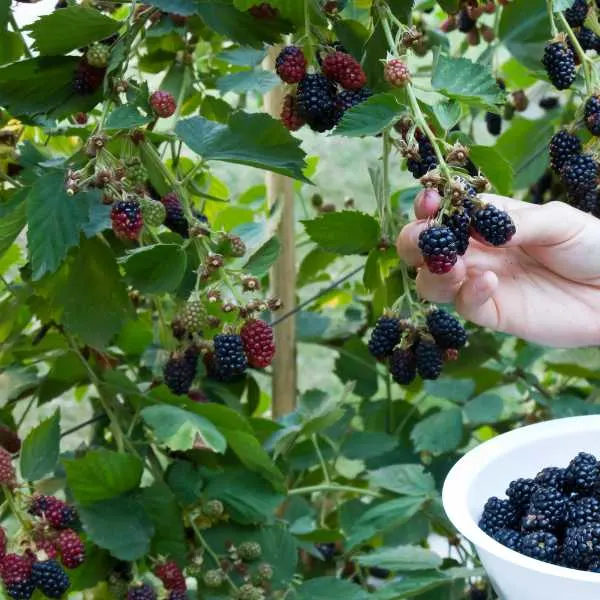
Blackberry can either grow on bushes or grow on trailing vines. If you choose to grow trailing vine blackberries the vines of these berries can easily be trained to climb up a trellis.
Blackberries can be grown in zones 5 through 8 and really tend to thrive in the Pacific Northwest.
Keep in mind that blackberry vines take two years from when they are first planted to begin producing fruit. Make sure your berries get plenty of sunshine to grow their best.
Blackberries are normally harvested from June to August and can be enjoyed fresh off the vine or can be frozen for later use. You can also enjoy the berries in pies and made into jam.
#4. Tomatoes
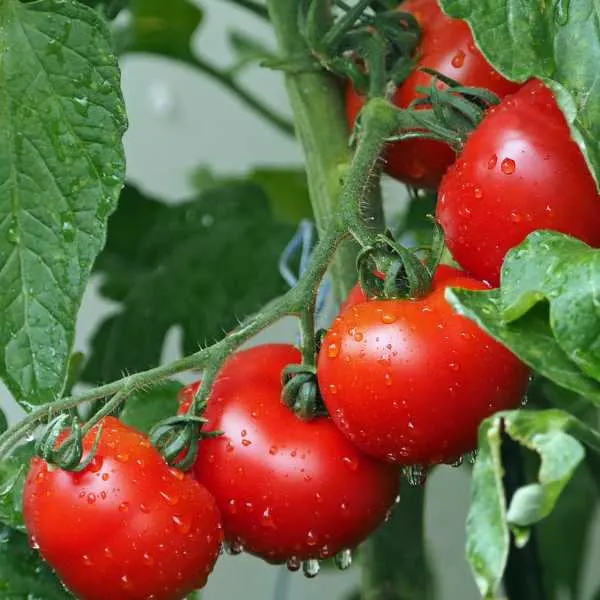
Tomatoes are probably the most popular fruit/vegetable grown in home gardens around the country. There are several varieties of tomatoes from the small grape and cherry tomatoes to the extremely large beefsteak tomatoes and everything in between.
Tomato vines need the support of a stake or trellis to grow and the larger variety of tomato the stronger support they will need.
You can grow tomatoes in zones 2 through 11 and it takes these plants 55 to 80 days to be ready to harvest. Tomatoes can be enjoyed in salads, sandwiches, sauces, salsas, soups, casseroles and other dishes.
#5. Pumpkin
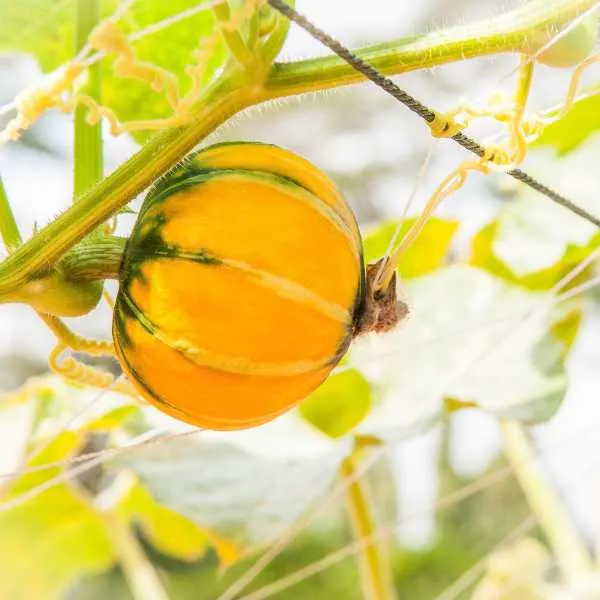
Pumpkin is a type of winter squash that grows on long trailing vines. Growing pumpkins horizontally takes up an immense amount of ground space.
While larger pumpkins can be a challenge to grow on the vines vertically, there are smaller varieties of pumpkins such as “ Jack be Little” and “Baby Boo” that do fine when grown vertically.
Pumpkins can be grown in zones 3 through 9 and thrive when grown in full sun.
They can be enjoyed roasted, baked, made into pies and used as decorations.
#6. Common Pole Bean
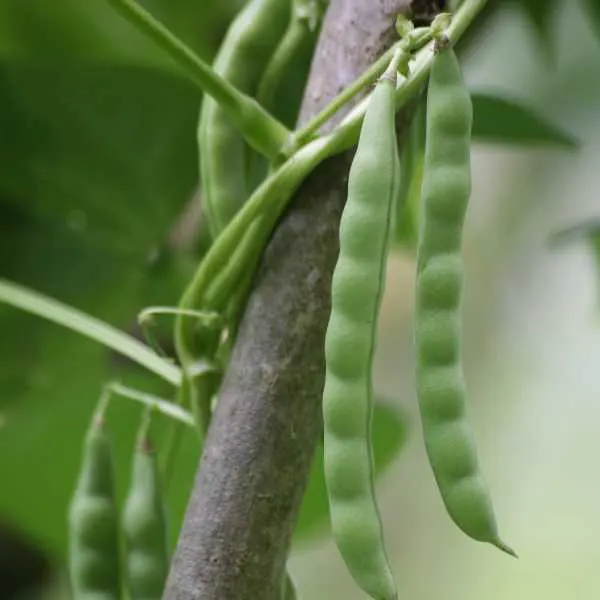
Common pole beans also known by the name green beans, or string beans come in both bush or vine varieties. Common beans are an annual plant that thrive in zones 2 through 11 and prefer rich loamy soil.
When pole beans are grown on a trellis these vines can grow 10 to 15 feet tall. These beans can be enjoyed as a side dish, as an ingredient in soups and strews, made into green bean casserole, or can be canned or frozen to be enjoyed over the winter months.
#7. Peas
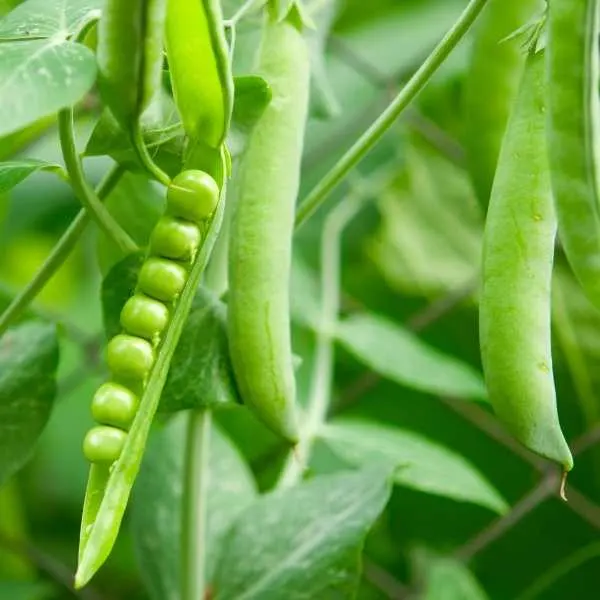
Peas are one of the first vegetables of the season. There are several different types of peas including sweet peas, snow peas and snap peas. Peas can be grown on a bush or a vine (known as pole peas).
Pole pea vines can easily be trained to climb a trellis and can reach 4 to 6 feet in height.
Peas can be grown in zones 3 to 11 and you will want to plant them early so they mature while the weather is still cool.
Peas can be enjoyed as a side dish, in casseroles, soups, and stews. You can also can peas or freeze them to enjoy them for months to come.
#8. Acorn Squash

Acorn squash is one of the many types of winter squash and like all squash plants they grow on a vine. It is easy to grow vertically because the acorn shaped vegetable is small, weighing only 1 or 2 pounds.
Training your acorn squash vine to grow up a trellis is fairly easy though it is recommended that you attach some of the vine to the trellis with either twine or vegetable tape.
Acorn squash can be grown in zones 4 through 11 and takes about 85 days to reach maturity.
It is a tasty vegetable when baked or roasted or make some warm hardy acorn soup.
Final Thoughts on the Best Edible Vines to Grow Vertically
Choosing to grow edible vine plants vertically can leave your garden or raise vegetable/fruit bed looking neater. It can also protect vegetables such as squash and pumpkins from mold, which is often a problem when the vines and vegetables trail along the ground.
There are many edible climbing plants that can be grown vertically and the above-mentioned plants are just a few.
